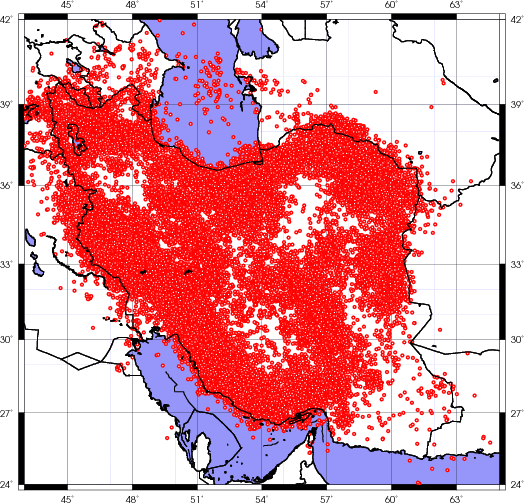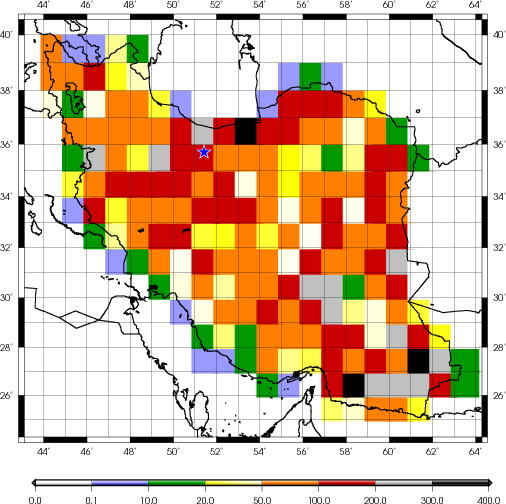An average of 175 earthquakes with ML
> 4 occur in Iran every year. About 99% of Iranian major cities, are
built at a distance less than or equal to 100 km from Quaternary
faults. About 60% of such cities are less than 10 km away from these
faults which exposes them to some level of hazard. It is very difficult to comment on the extent of risk at these
cities, but we can very roughly guesstimate. Such endeavors are usually
based on general geological and seismotectonic features exhibited at a certain location (=seismotectonic province).
We should still wonder whether or not such assessments are in anyway useful. This is why many researchers use the accessible seismic data to analyze the hazard to which the cities are exposed. The results are usually
expressed in the form of either iso-intensity (acceleration) contour
maps or block zonings. The first type of maps gives the possible amount of shaking as result of a possible future earthquake, and the second type stops at specifying potential seismic sources and the respective possibly affected areas in their vicinity.
Here is a movie of the seismicity of the Iranian plateau between (2006-2017).


